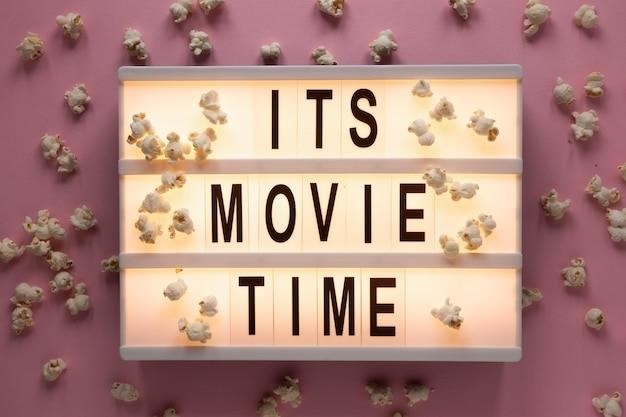Overview of the Movie “Thirteen Days”
Thirteen Days is a captivating film that recounts the tense 13-day period in October 1962 when the world teetered on the brink of nuclear war during the Cuban Missile Crisis. The film offers a compelling glimpse into the inner workings of the Kennedy administration as they grapple with the implications of Soviet nuclear missiles being deployed in Cuba.
The Cuban Missile Crisis
The Cuban Missile Crisis‚ depicted in the film “Thirteen Days‚” was a pivotal moment in Cold War history. It unfolded when the United States discovered that the Soviet Union was secretly deploying nuclear missiles in Cuba‚ just 90 miles from the US mainland. This revelation sparked a period of intense diplomatic negotiations and military posturing‚ as both superpowers teetered on the edge of nuclear war. The crisis culminated in a tense standoff‚ with President John F. Kennedy imposing a naval blockade around Cuba to prevent further Soviet shipments. Ultimately‚ the crisis was resolved through a series of secret negotiations‚ leading to the removal of Soviet missiles from Cuba and a promise from the US not to invade the island nation.
Key Characters and their Roles
The film “Thirteen Days” features several key figures who played pivotal roles in the Cuban Missile Crisis. President John F. Kennedy‚ portrayed by Bruce Greenwood‚ is the central figure‚ tasked with making crucial decisions regarding the crisis. Robert F. Kennedy‚ played by Steven Culp‚ serves as Attorney General and a close advisor to his brother‚ providing valuable insight and counsel; The film also highlights the role of Kenny O’Donnell‚ portrayed by Kevin Costner‚ who served as a special assistant to the President and played a key role in managing the crisis. Other notable figures include Dean Acheson‚ played by Sir Sidney Poitier‚ who serves as a former Secretary of State and offers his experience and wisdom‚ and McGeorge Bundy‚ played by Colm Feore‚ who acts as the National Security Advisor and helps coordinate the government’s response.
Historical Accuracy and Depiction
While “Thirteen Days” aims to capture the essence of the Cuban Missile Crisis‚ it is important to note that the film takes some creative liberties. While the film accurately depicts the tension and uncertainty of the crisis‚ it simplifies some of the complex political and military dynamics at play. For instance‚ some historical accounts suggest that the role of Kenny O’Donnell was not as central as depicted in the film. Despite these discrepancies‚ “Thirteen Days” provides a compelling and informative portrayal of a pivotal event in history‚ offering valuable insights into the pressures and challenges faced by those in power during a time of global crisis.
Examining the Movie
Beyond its historical context‚ “Thirteen Days” offers a nuanced exploration of leadership‚ diplomacy‚ and the weight of decision-making in a crisis.
The Film’s Perspective
The film offers a compelling perspective on the Cuban Missile Crisis by focusing on the personal and professional challenges faced by President John F. Kennedy and his advisors. It delves into the intense pressure and uncertainty they endured as they navigated a complex geopolitical situation. The film highlights the importance of collaboration and strategic decision-making in the face of a potential nuclear conflict.
Themes and Messages
Thirteen Days explores several crucial themes‚ including the perils of Cold War tensions‚ the importance of diplomatic solutions‚ and the weight of leadership in times of crisis. The film underscores the dangers of miscalculation and the need for careful consideration of potential consequences; It emphasizes the value of communication and negotiation in averting conflict‚ particularly in situations involving nuclear weapons.
Key Scenes and Moments
The film features several pivotal scenes that capture the intensity of the crisis. One notable scene is the discovery of the Soviet missile sites in Cuba through U-2 spy plane photographs. The subsequent meeting of the ExComm (Executive Committee of the National Security Council) to discuss options is another crucial moment‚ highlighting the difficult decisions faced by the Kennedy administration. The film also powerfully depicts the tension of the naval blockade and the negotiations with the Soviet Union.
“Thirteen Days” Quiz Questions
Test your knowledge of this historical event with a variety of quiz questions.
Multiple Choice Questions
What was the primary method the United States used to discover the presence of Soviet missiles in Cuba?
a) Satellite imagery
b) Spy plane photographs
c) Human intelligence
d) Diplomatic communication
Which of these figures was NOT a key player in the events of the Cuban Missile Crisis as depicted in the film?
a) Robert F. Kennedy
b) Dean Acheson
c) McGeorge Bundy
d) J. Edgar Hoover
What was the name of the group assembled by President Kennedy to advise him on the crisis?
a) The Executive Committee of the National Security Council (ExComm)
b) The National Security Council (NSC)
c) The Joint Chiefs of Staff
d) The Cabinet
True/False Questions
True or False⁚ The film “Thirteen Days” accurately portrays the events of the Cuban Missile Crisis without any fictionalized elements.
True or False⁚ President Kennedy’s decision to impose a naval blockade around Cuba was met with unanimous support from his advisors.
True or False⁚ The film depicts the Soviet Union’s decision to withdraw its missiles from Cuba as a direct result of the US blockade.
True or False⁚ The film portrays the Cuban Missile Crisis as a purely political and diplomatic event‚ with little to no focus on the military aspects.
True or False⁚ The film “Thirteen Days” was released in 1962‚ the same year as the Cuban Missile Crisis.
Short Answer Questions
What key piece of evidence did the United States use to confirm the presence of Soviet missiles in Cuba?
Briefly describe the “ExComm” and its role in the events of the Cuban Missile Crisis.
What was the primary objective of the US naval blockade imposed around Cuba?
What were some of the potential consequences of a military strike against Soviet missile sites in Cuba?
What role did Robert Kennedy‚ the Attorney General‚ play in the resolution of the Cuban Missile Crisis?
Discussion Points and Analysis
Thirteen Days offers a powerful platform for examining the complexities of international relations‚ leadership‚ and the profound impact of the Cold War era.
The Importance of Diplomacy
The film vividly portrays the critical role of diplomacy in preventing a catastrophic conflict. The Kennedy administration’s efforts to engage in dialogue with the Soviet Union‚ despite the immense pressure to resort to military action‚ demonstrate the potential of diplomacy to navigate complex geopolitical situations. The film underscores the importance of communication‚ understanding‚ and finding common ground in resolving international crises. By showcasing the careful and measured approach taken by the US government‚ “Thirteen Days” highlights the power of diplomacy in mitigating tensions and avoiding potentially disastrous outcomes.
The Role of Leadership
The film highlights the immense responsibility and pressure faced by President John F. Kennedy during the Cuban Missile Crisis. His leadership is depicted as a delicate balance of decisiveness‚ restraint‚ and strategic thinking. The film portrays Kennedy’s ability to navigate conflicting advice from his advisors‚ maintain a calm demeanor amidst escalating tensions‚ and ultimately make tough decisions that prevented a nuclear war. “Thirteen Days” underscores the importance of a leader’s ability to make sound judgments‚ remain composed in the face of adversity‚ and inspire confidence in the face of a global crisis.
The Cold War Context
The Cuban Missile Crisis was a pivotal moment in the Cold War‚ a period of intense geopolitical rivalry between the United States and the Soviet Union. The film effectively depicts the underlying anxieties and mistrust that characterized this era. The discovery of Soviet missiles in Cuba exposed the fragility of the existing nuclear balance and the potential for catastrophic consequences. “Thirteen Days” serves as a reminder of the dangerous dynamics of the Cold War and the critical role diplomacy played in preventing an unimaginable global catastrophe.

Additional Resources and Information
To delve deeper into the Cuban Missile Crisis‚ explore historical documents‚ critical reviews‚ and related films.
Historical Documents and Accounts
For a comprehensive understanding of the Cuban Missile Crisis‚ consult primary source materials. The John F. Kennedy Presidential Library and Museum houses an extensive collection of documents related to the crisis‚ including declassified memos‚ transcripts of meetings‚ and personal letters. The National Security Archive also provides a wealth of declassified information‚ including intelligence reports‚ diplomatic cables‚ and military plans. These resources offer firsthand accounts from key players involved in the crisis‚ providing valuable insight into the decision-making processes and the tense atmosphere of those thirteen days.
Critical Reviews and Analyses
Film critics and historians have offered diverse perspectives on “Thirteen Days.” Some praise its dramatic tension and its portrayal of the Kennedy administration’s internal struggles‚ while others argue that the film simplifies complex historical events and focuses too heavily on the role of a specific individual‚ Robert Kennedy. For a balanced perspective‚ seek out reviews from reputable sources‚ such as The New York Times‚ Variety‚ and The Hollywood Reporter‚ which offer in-depth analyses of the film’s historical accuracy‚ thematic content‚ and overall effectiveness.
Related Films and Documentaries
For a broader understanding of the Cuban Missile Crisis‚ explore documentaries and other films that delve into this pivotal historical event. “The Fog of War” (2003) offers a personal reflection from Robert McNamara‚ who served as Secretary of Defense during the crisis. “The Cuban Missile Crisis” (2006) is a comprehensive documentary that features interviews with key figures involved‚ including former President Jimmy Carter and former Soviet Premier Mikhail Gorbachev. These films provide a valuable context for understanding the events portrayed in “Thirteen Days” and the broader implications of the Cold War.
